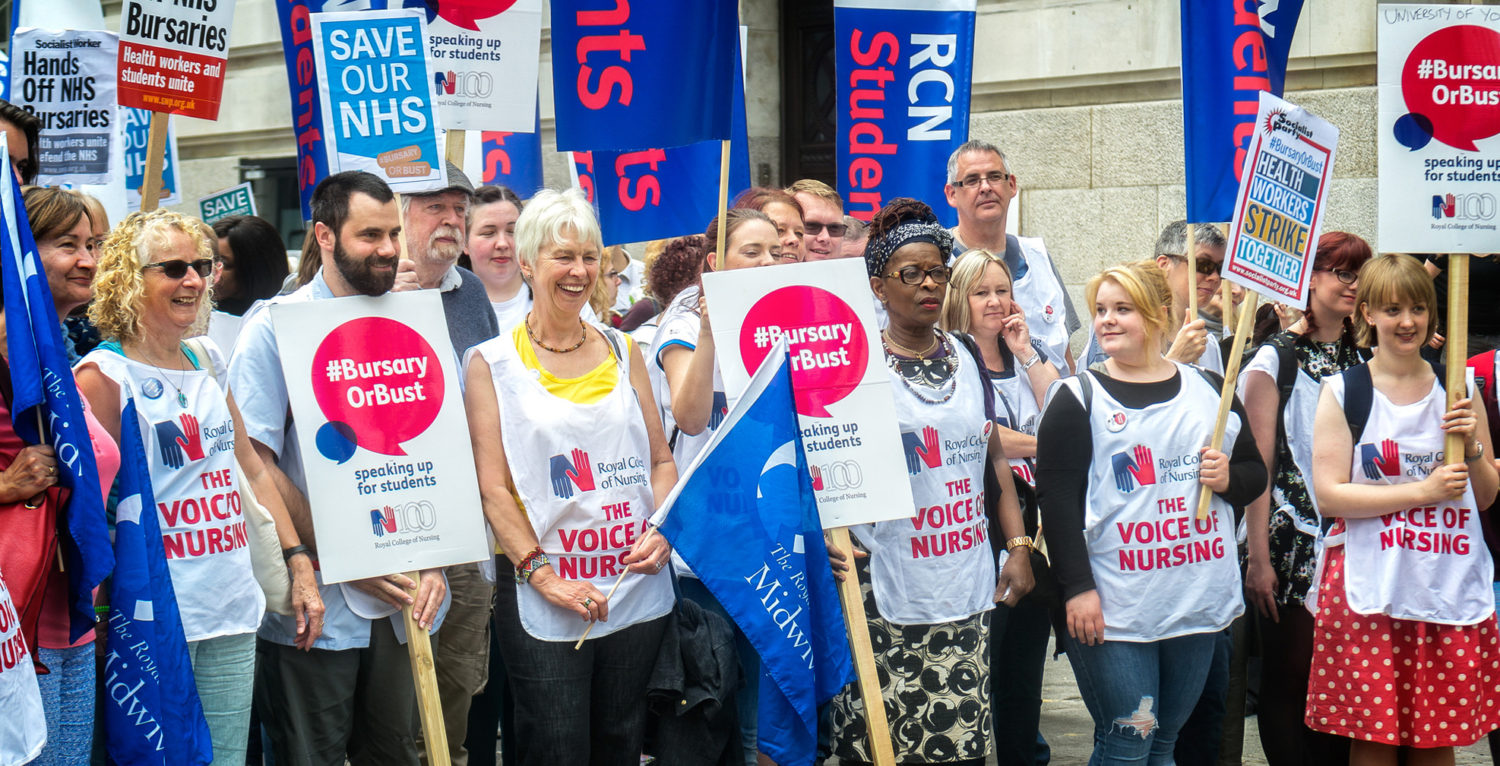Plugging the gaps
The nursing profession is haemorrhaging staff and it’s putting our NHS at risk, writes Donna Kinnair.
When you look at the big picture, it’s sometimes hard to believe that we’ve come to this. There are 40,000 nursing vacancies in England alone, and that figure is growing by the day.
But of course, it’s not just about the numbers. It’s about nurses staying on after a 12-hour shift because their ward is so short-staffed. It’s about care left undone as too few nurses struggle to cope with multiple patients with complex needs. It’s about patients dying alone because there is no-one free to sit with them. None of this is acceptable. Nurses outnumber doctors three to one in the NHS and for the vast majority of people, nurses will carry out much of their treatment and care, supported by healthcare assistants and other nursing staff.
Whether it is caring for a new mother on neonatal, helping a child with disabilities learn in a mainstream school, or easing the pain of a dying patient, nurses form the foundation of the NHS, from cradle to grave.
But failures of planning and policy are chipping away at that foundation, and collapse could be just one more bad winter away.
I’d like to tell you the government has a joined-up, effective and robust plan in place to increase recruitment and retention, and safeguard the nursing workforce of the future. Sadly it is simply not the case.
Instead we have a profession that’s haemorrhaging staff left, right and centre. The decision to remove the nursing bursary is increasingly looking like a disaster – the latest UCAS figures show the number of applications for the next academic year has fallen by a third since the same point in 2016 – 43,720 down to 29,390, and by 4,310 on last year alone.
And more and more nurses, unable to offer patients the care they have been trained to provide, are leaving for Australia or America, or simply leaving the profession altogether.
On top of that we have an ageing workforce, a third of whom will be eligible for retirement in the next five years. It’s not surprising some hospital trusts have run up multi-million pound debts trying to cover the cost of agency staff, in a desperate effort to fill rotas.
So what are the solutions? The government points to apprenticeship schemes, but the truth is that the new nursing apprenticeship attracted just 30 trainees last year.
Apprenticeships alone will never be enough to arrest the devastating shortage of registered nurses – it’s attempting to fill a swimming pool with a teaspoon. Evidence shows that a nursing degree is still the fastest and safest route into nursing, with improved outcomes for patients.
The reality is that we need to train more than 28 nurses per 100,000 of the population. The aim should be self-sufficiency – the UK has become used to relying on recruitment from overseas, yet Brexit has shown just how precarious that is. To achieve this, we need some creative solutions.
Here are a few suggestions. First, create a central funding pot within the Department of Health and Social Care. This could be used to cover means-tested grants, and allow for tuition fees write-off to encourage more students into the profession.
We also need incentives to tempt graduates of other subjects, and those already working in the NHS, to convert to nursing through post-graduate programmes, with sufficient financial support.
But it’s not enough to look to the future – an immediate investment in our current workforce would go some way to making nurses feel valued again.
Too many have had career development opportunities snatched away as the Health Education England budget for continuing professional development has been cut by 60 per cent over the past two years, from £205m in 2015/16 to £83.49m in 2017/18.
These budgets must be reinstated, and the opportunities they present clearly communicated.
And until we achieve self-sufficiency, which in truth is years away at best, we need to make it easier for overseas nurses to come and work in this country. The Nursing and Midwifery Council must improve its processes, and do more to help both individuals and employers. To pull all this together requires a comprehensive, long-term workforce strategy which determines the real demands that our ageing growing population places on health and care services.
And it’s not enough to stop at the NHS. Given the significant proportion of nurses needed across all sectors, any plan based solely on the NHS, or even the wider public sector, will likely fail. There need to be enough trained nurses in our country that an individual choosing to pursue a career in the independent sector has no detrimental impact on the NHS – tens of thousands of nurses work in social care, outside the public sector.
We need an honest discussion about the standard of health and social care we want to see in this country and how we, as a society, are prepared to pay for it.

